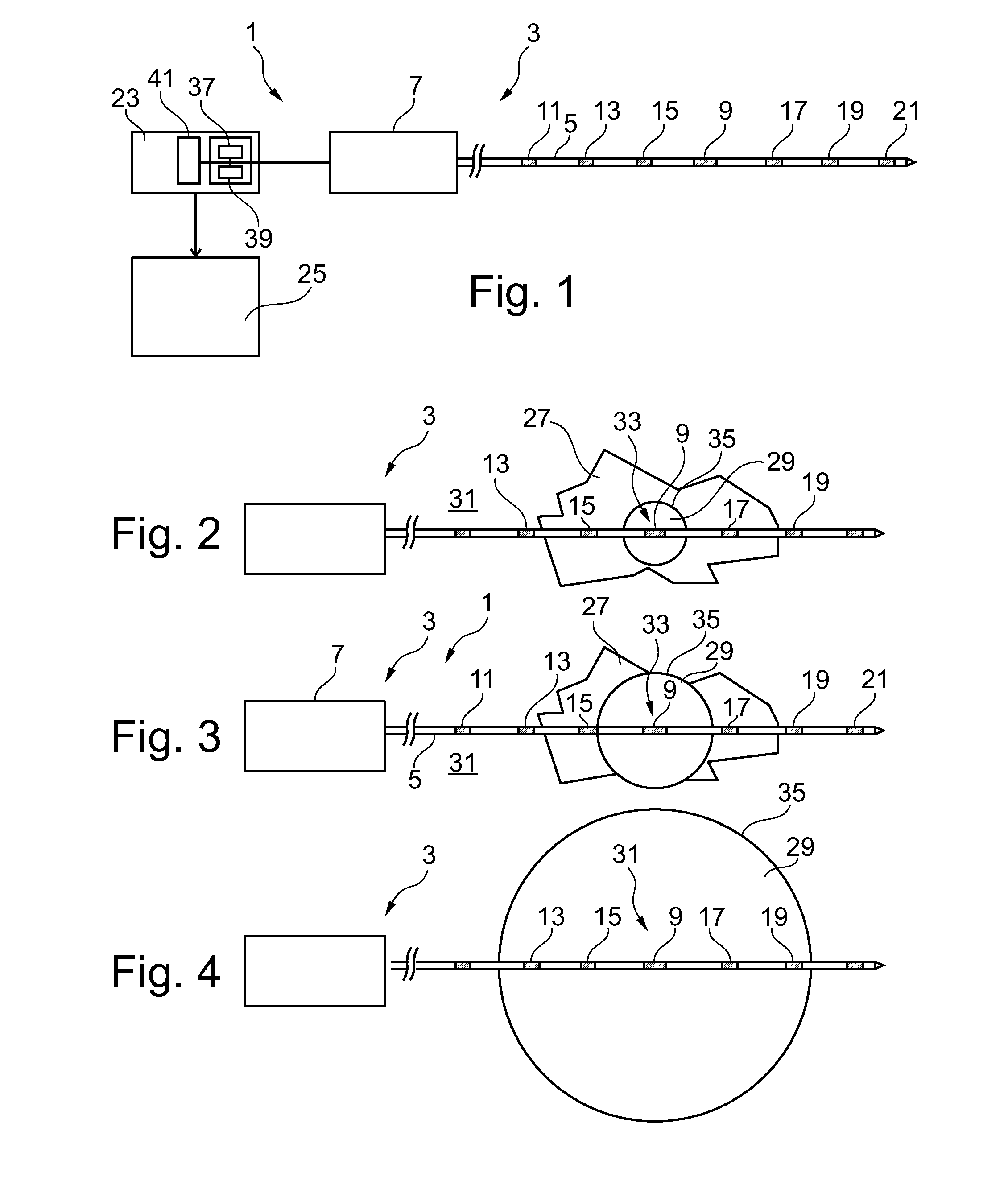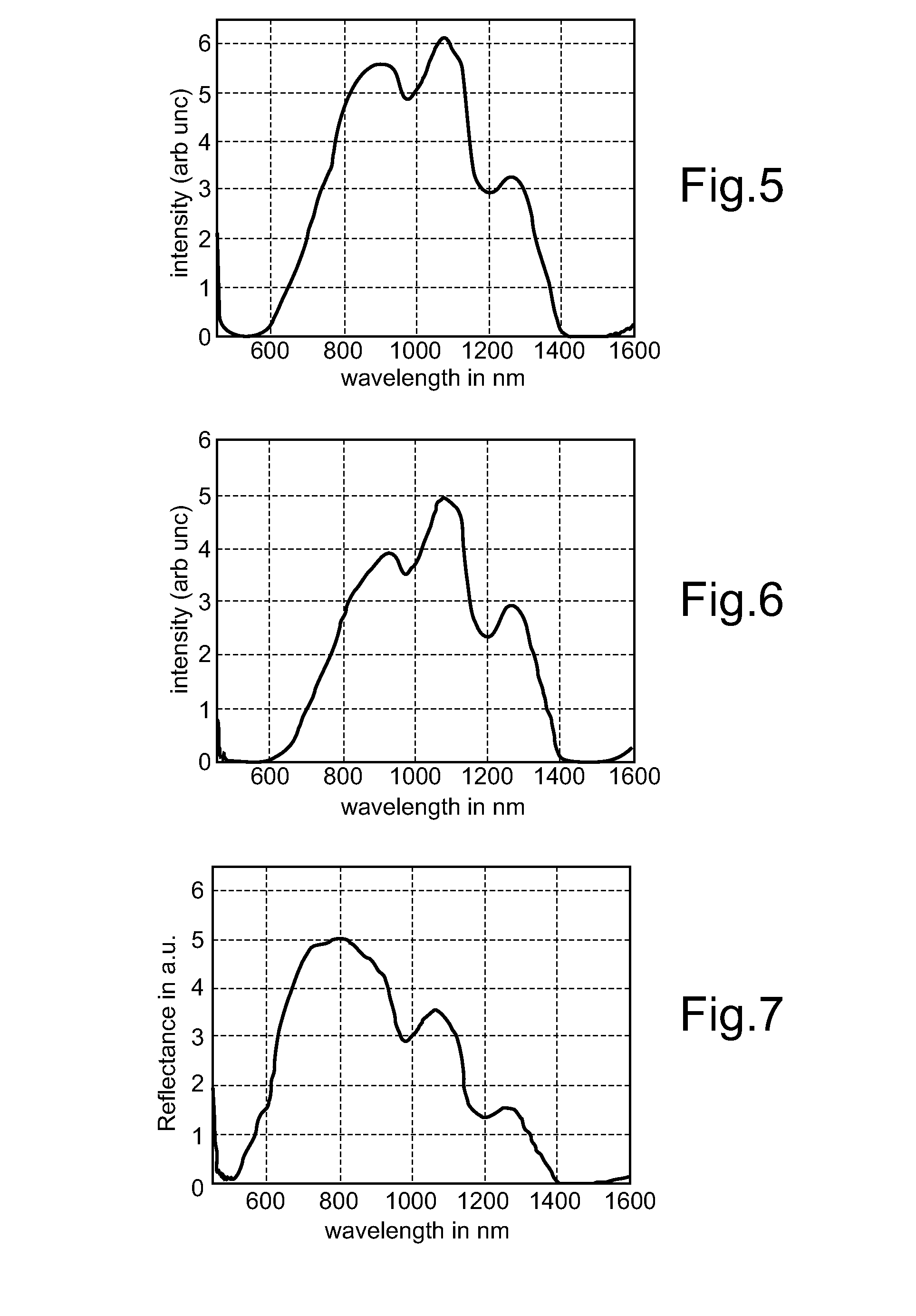Interventional ablation device with tissue discriminating capability
a tissue discrimination and ablation device technology, applied in the field of interventional ablation devices, can solve the problems of cell death, tumor cell destruction, and inability to complete the removal, and achieve the effect of simple and cost-effective monitoring of the ablation procedur
- Summary
- Abstract
- Description
- Claims
- Application Information
AI Technical Summary
Benefits of technology
Problems solved by technology
Method used
Image
Examples
Embodiment Construction
[0024]FIG. 1 shows an interventional ablation device 1 according to an embodiment of the present invention. The ablation device 1 may be used for example to ablate, i.e. remove or destroy, e.g. malicious tissue such as tumorous tissue enclosed by healthy tissue.
[0025]The ablation device 1 comprises an ablation needle 3 having an elongated body 5 and a handle 7. The elongated body 5 has a small diameter of e.g. between 22 and 11 gauge i.e. 0.72 and 3.05 mm and a length of e.g. between 100 and 300 mm or even more preferred between 120 and 250 mm. Furthermore, the elongated body 5 has a pointed tip at a distal end thereof thereby enabling to introduce the ablation needle easily into a patient's tissue.
[0026]An ablation element 9 is arranged on the body 5. The ablation element 5 is arranged in a region close to the distal end of the body 5 but spaced apart from this distal end. For example, the ablation element may be arranged at a distance between 5 and 100 mm away from the distal end ...
PUM
 Login to View More
Login to View More Abstract
Description
Claims
Application Information
 Login to View More
Login to View More - R&D
- Intellectual Property
- Life Sciences
- Materials
- Tech Scout
- Unparalleled Data Quality
- Higher Quality Content
- 60% Fewer Hallucinations
Browse by: Latest US Patents, China's latest patents, Technical Efficacy Thesaurus, Application Domain, Technology Topic, Popular Technical Reports.
© 2025 PatSnap. All rights reserved.Legal|Privacy policy|Modern Slavery Act Transparency Statement|Sitemap|About US| Contact US: help@patsnap.com



